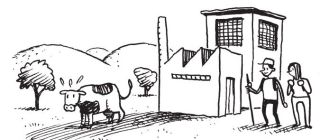Rural and Regional Investment – priorities for Budget 2021

Rural and Regional Investment – priorities for Budget 2021
As we navigate through the global crisis caused by Covid-19, it is clear that our communities, rural areas and regions will bear a significant social and economic impact over the long-term. The challenges that faced rural Ireland prior to the current pandemic remain, including an older population, higher rates of part-time employment, lower median incomes, greater distance from everyday services, and higher poverty rates than the national average. Now, new challenges have emerged, not least the impact of a potentially prolonged period of unemployment on areas that are already struggling.
Rural and regional economies
Rural Ireland is a valuable resource with much to contribute to Ireland’s future social, environmental and economic development. In order to ensure we have thriving communities and towns throughout Ireland a step-change in how we invest in and develop policy for rural areas is required.
Low density rural economies are fundamentally different to urban economies and as such require different polices to meet a different set of challenges and opportunities. It is important that rural and regional development is integrated to support sustainable local economies and to ensure that local services are utilised most effectively to address the specific needs of a particular region and the rural communities within it.
Policies such as increased investment in healthcare and other services, and ensuring affordable and accessible quality public services for all regardless of urban or rural location must be part of the response. Improved and expanded public services could contribute to regional attractiveness in remote and rural areas, while also supporting the transition to a low carbon economy.
Priorities to guides investment
Public investment choices should be linked to a development strategy based on assessment of regional or local characteristics, competitive advantages, growth, innovation, and job creation potential, and considerations of equity and environmental sustainability. Regional Economic Development Zones (REDZ) can play a key role here. It will be vital to engage with all stakeholders (public, private sector, trade union, environment, farming and civil society) in the design and implementation of public investment strategies to enhance social and economic value, and to ensure accountability.
Policies should be implemented at different scales that match with regional and local characteristics, for example; local services, labour supply, and food chains, and adapting them based on current and future needs. This would see collaboration between local agencies, employers, the community and voluntary sector, trade unions, and local and regional academic facilities in collaboration with the REDZ.
Services and infrastructure
Government policy must encourage the efficient and effective provision of public services and infrastructure to maintain quality and accessibility, address market failures, and respond to emerging needs, especially in under-served rural communities. The rollout of rural proofing is vital in this regard.
Increased funding is required for rural public transport and the nationwide expansion of cycling infrastructure and greenways. We must invest to increase the range of public transport options available and to ensure the rural public transport options and fleet are in line with our climate commitments.
The increase in remote working is an opportunity for rural areas, yet according to Census 2016 only 61 per cent of rural households had broadband access. Strategies and plans to promote rural and regional economies are heavily reliant on the provision of reliable, quality, high-speed broadband. A significant investment in the expedited rollout of broadband and in Smart Villages and remote working hubs is required.